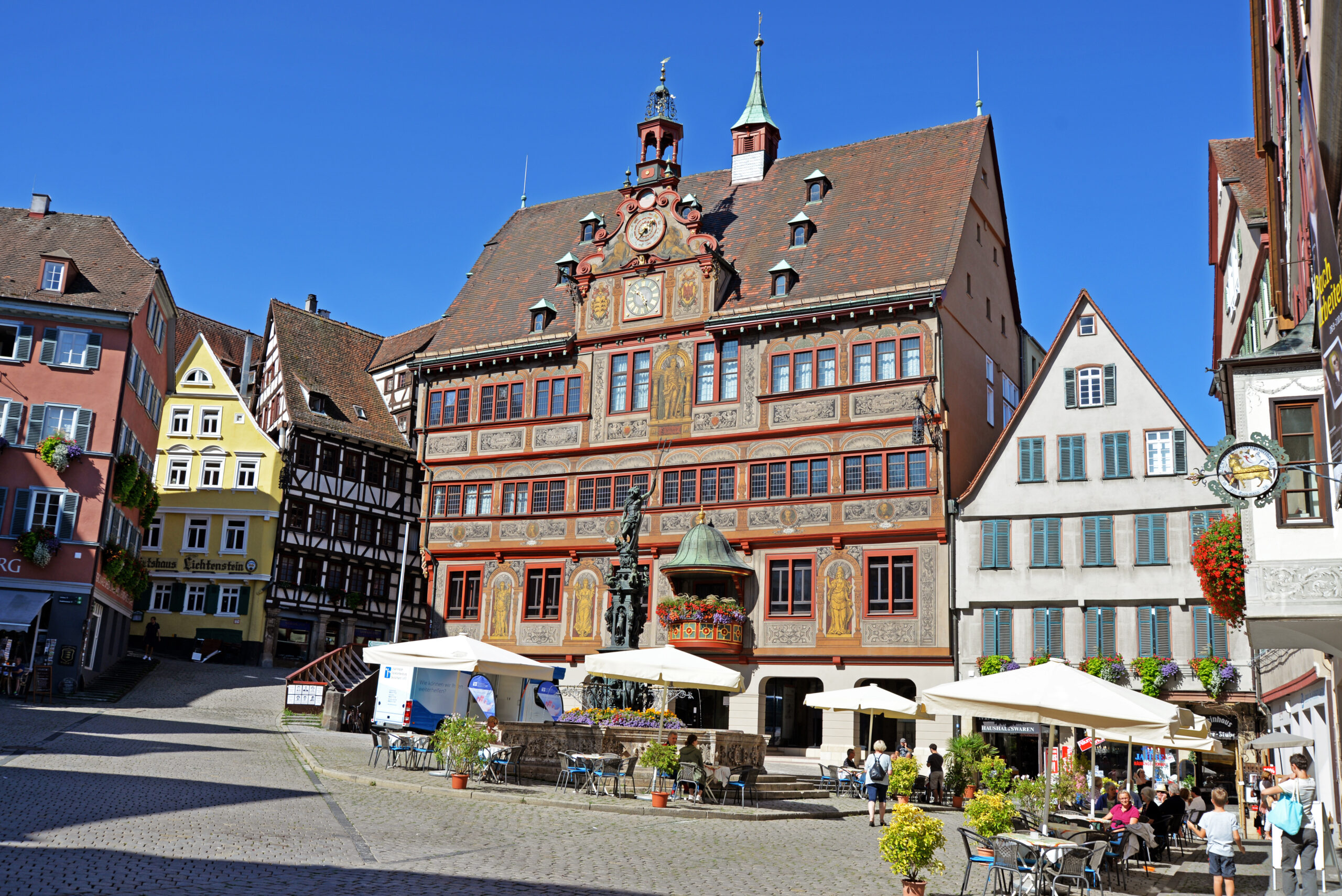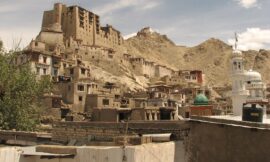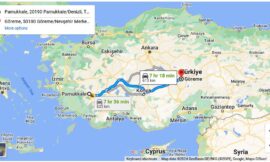The Rathaus, or Town Hall, in Tübingen, Germany, stands as an architectural jewel at the heart of the historic Old Town. With its distinctive façade, ornate details, and a rich history dating back centuries, the Rathaus is more than a civic building; it is a symbol of municipal governance, community life, and the enduring legacy of Tübingen.
The Rathaus is located on the Markt square, the bustling center of Tübingen where daily life unfolds against the backdrop of medieval buildings and lively market activities. The square itself is a mosaic of history, commerce, and cultural expression, with the Rathaus serving as a prominent focal point.
One of the defining features of the Rathaus is its façade, a remarkable example of Renaissance architecture. Elaborate carvings, arched windows, and decorative elements adorn the building, reflecting the craftsmanship and attention to detail characteristic of the era. The Rathaus stands as a testament to the prosperity and civic pride of Tübingen during the Renaissance period.
The Rathaus in Tübingen is not a single building but a complex that has evolved over time. The Alte Rathaus, or Old Town Hall, is the central structure, dating back to the 15th century. This portion of the Rathaus encapsulates the town’s medieval heritage, featuring the intricate architecture of the late Gothic period. Adjacent to the Alte Rathaus is the Neue Rathaus, or New Town Hall, a later addition that seamlessly blends with the original structure.
The Rathaus serves as the seat of local government, housing administrative offices and spaces for official functions. The ornate council chamber within the Alte Rathaus is a historically significant room where municipal decisions were deliberated over the centuries. The room is adorned with wooden paneling, heraldic motifs, and a sense of historical gravitas.
One notable feature of the Rathaus is its clock tower, which contributes to the distinctive silhouette of Tübingen’s Old Town. The clock tower not only serves a practical purpose in keeping time but also adds a visual focal point to the Markt square. Visitors can often hear the chimes of the Rathaus clock, a familiar sound that punctuates the rhythm of daily life in Tübingen.
The Rathaus also plays a central role in civic and cultural events in Tübingen. The square in front of the Rathaus is a natural gathering place for festivals, markets, and celebrations. It is a venue where locals and visitors come together to partake in the vibrant community life that defines Tübingen.
The Rathaus is not merely a static symbol of the past; it is a living entity that continues to evolve with the town. Its façade is a canvas for projecting historical light shows and festive decorations during special occasions, adding a dynamic and contemporary touch to the medieval architecture.
Surrounding the Rathaus, the Markt square itself is teeming with activity. Cafes, boutiques, and historic buildings contribute to the lively atmosphere, creating a space where the town’s past and present intersect. The Rathaus is a cornerstone of this dynamic square, anchoring the cultural and social life of Tübingen.
In conclusion, the Rathaus in Tübingen is a cultural and architectural gem that encapsulates the town’s history, identity, and civic spirit. From its Gothic origins to the Renaissance embellishments and modern adaptations, the Rathaus stands as a symbol of continuity and community. It invites all who visit to appreciate not only the intricate details of its façade but also the vibrant life that unfolds in its shadow on the lively Markt square.



